|
|
 |
 |
United States
Savannah
Historic District
The Savannah Historic District corresponds roughly to the pre-civil war city limits. A number of buildings make the area a particular attraction, resulting in it being declared a National Historic Landmark District in 1966, and is one of the largest urban community-wide historic preservation districts in the United States.
Cathedral Basilica of Savannah

Dating back to a church built in 1779, the present building of the Cathedral Basilica of St. John the Baptist in Savannah was the first building in Georgia to be constructed of brick and was dedicated in 1876, although it underwent a major renovation following a fire in 1898, which destroyed much of the building and its interior. Having undergone a number of renovation projects its interior now has a light bright appearance and displays many beautiful pieces of art and church architecture. READ MORE
Birthplace of Juliette Gordon Low
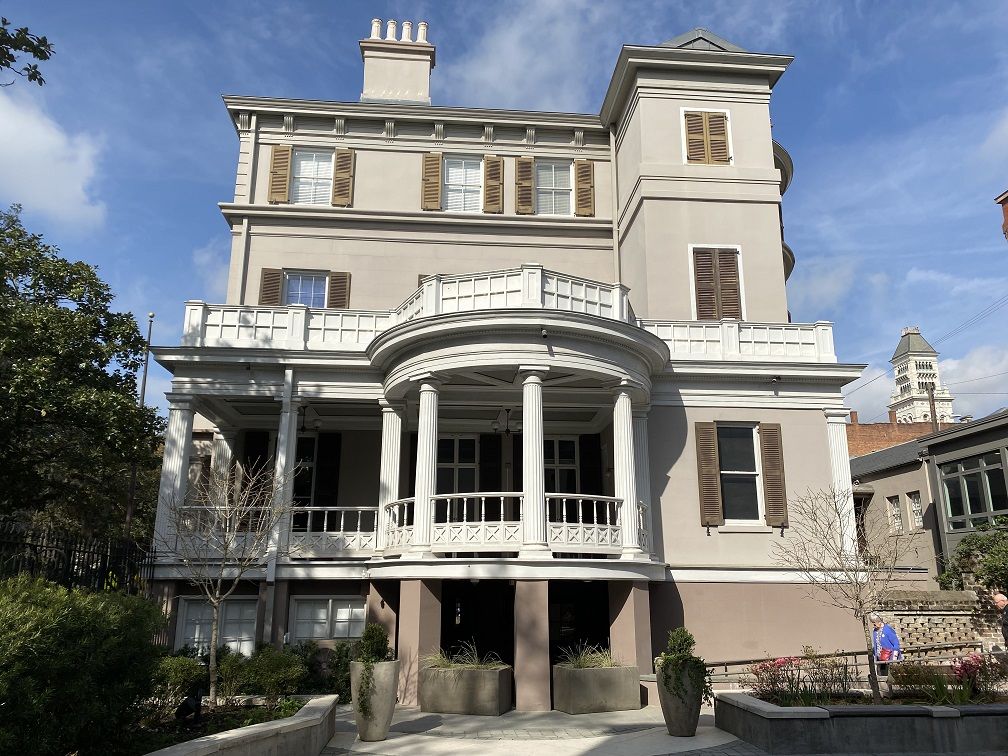 The primary historic interest of this house was that it was the birthplace of Juliette Gordon Low, who was born here in 1860. In 1912, Juliette founded the Girl Scouts Movement in the United States, so when the house was threatened with demolition in 1953, it was purchased by the Girl Scouts of the USA. A major international fundraising campaign was then conducted to finance the restoration work in order to restore the house to its original condition.
The primary historic interest of this house was that it was the birthplace of Juliette Gordon Low, who was born here in 1860. In 1912, Juliette founded the Girl Scouts Movement in the United States, so when the house was threatened with demolition in 1953, it was purchased by the Girl Scouts of the USA. A major international fundraising campaign was then conducted to finance the restoration work in order to restore the house to its original condition.
Colonial Park Cemetery
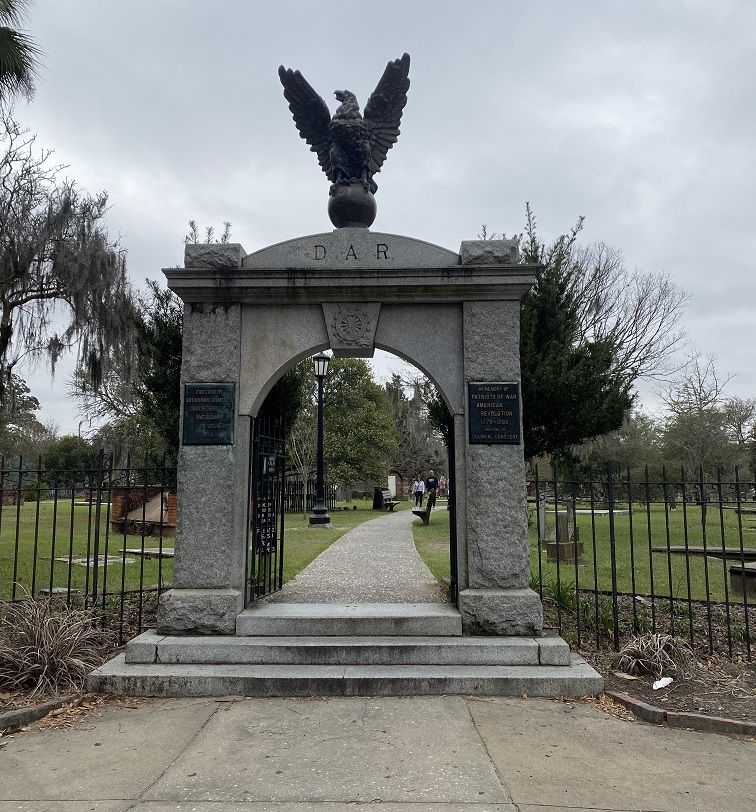
At the heart of Savannah’s Historic District is the Colonial Park Cemetery that served as the primary public cemetery from 1750 to 1853, which is when it ceased taking any interments. By 1789 it had been expanded three times in order to reach its current size, which covers approximately 6 acres, and it contains over 9,000 graves.
Davenport House
 Built in 1820, the Davenport House is a three-story high Federal-style home, which was the first project of the Historic Savannah Foundation, launching Savannah’s historic preservation movement in 1955. Located at 324 East State Street, the building contains fixtures and fittings to match the original design by Isaiah Davenport and his wife Sarah. In 1827, following Isaiah’s death, it was converted by Sarah to a boarding house, which it remained until 1840 when she sold it. In 1963, the first floor of the house was restored and on March 9th it opened to the public. Over the years the second and third floors were opened, and now the house functions as a historic house museum. READ MORE Built in 1820, the Davenport House is a three-story high Federal-style home, which was the first project of the Historic Savannah Foundation, launching Savannah’s historic preservation movement in 1955. Located at 324 East State Street, the building contains fixtures and fittings to match the original design by Isaiah Davenport and his wife Sarah. In 1827, following Isaiah’s death, it was converted by Sarah to a boarding house, which it remained until 1840 when she sold it. In 1963, the first floor of the house was restored and on March 9th it opened to the public. Over the years the second and third floors were opened, and now the house functions as a historic house museum. READ MORE
First Baptist Church
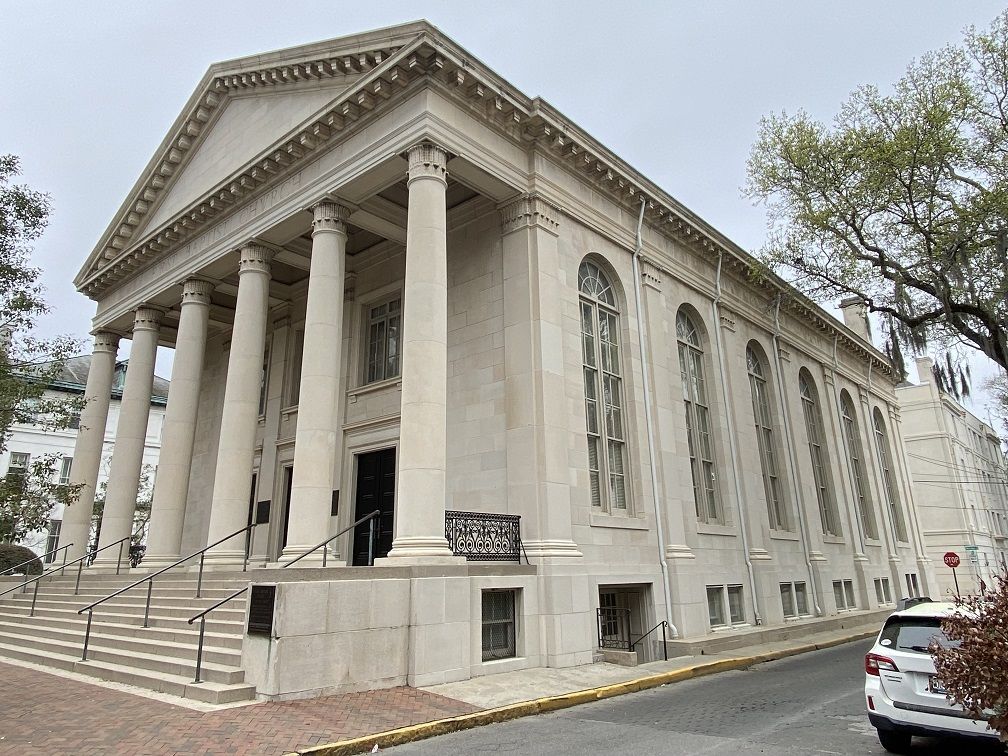 The First Baptist Church is Savannah’s oldest standing house of worship which was completed in 1833, although the congregation dates to 1800. The building was using the name "First" Baptist Church by 1947 in order to distinguish it from other Baptist congregations in the city. The church was one of the few southern churches to remain open throughout the Civil War. Constructed with a cupola which was removed in 1922 when the front of the building was extended, and the edifice was covered with limestone. The First Baptist Church is Savannah’s oldest standing house of worship which was completed in 1833, although the congregation dates to 1800. The building was using the name "First" Baptist Church by 1947 in order to distinguish it from other Baptist congregations in the city. The church was one of the few southern churches to remain open throughout the Civil War. Constructed with a cupola which was removed in 1922 when the front of the building was extended, and the edifice was covered with limestone.
Independent Presbyterian Church

Founded in 1755, the Independent Presbyterian Church of Savannah was established on land deeded by King George II of Great Britain. The first building was destroyed by fire in 1796 to be rebuilt but burnt down again in 1889. With a tower standing 227 feet high, the building is the tallest construction in downtown Savannah.
Lutheran Church of the Ascension
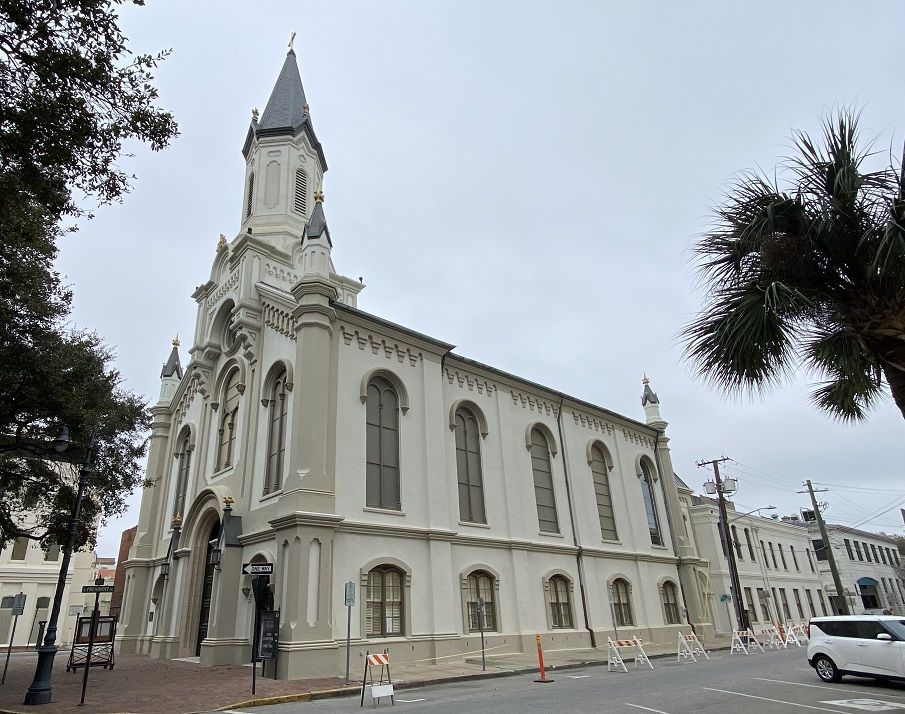 The Lutheran Church of the Ascension was founded in 1741. The land adjacent to Wright Square, where the current building stands, was purchased in 1756. In 1772, a former wooden courthouse building was obtained, which was moved to the site to become the first Lutheran church building in the city. The current building was constructed in 1843. Between 1875 and 1879 it underwent major remodelling. During the American Civil War, the church was occupied by Union soldiers and served as a field hospital. The Lutheran Church of the Ascension was founded in 1741. The land adjacent to Wright Square, where the current building stands, was purchased in 1756. In 1772, a former wooden courthouse building was obtained, which was moved to the site to become the first Lutheran church building in the city. The current building was constructed in 1843. Between 1875 and 1879 it underwent major remodelling. During the American Civil War, the church was occupied by Union soldiers and served as a field hospital.
Marshal House Hotel
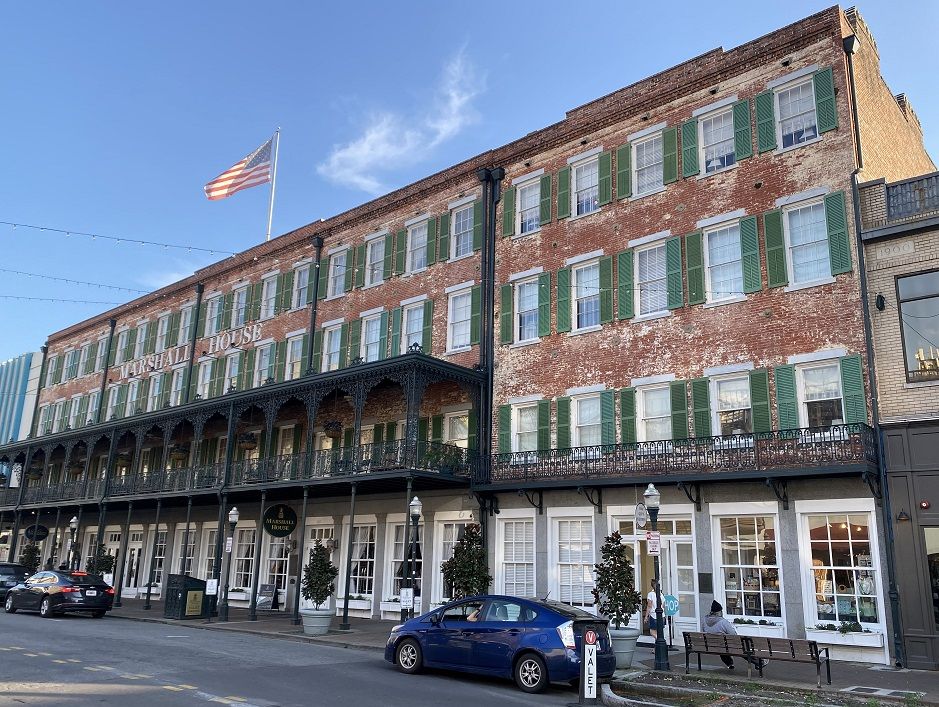 The Marshall House is Savannah’s oldest hotel, this developed during the railroad boom of the 1840s and 1850s when Savannah doubled in size and population. Seeing a need for accommodations and housing, business-woman Mary Marshall in 1851, developed the hotel. In 1864-65, The Marshall House was occupied by Union troops led by General William Sherman, and the building was used as a Union hospital for wounded soldiers until the end of the Civil War. In 1880: The adjoining building, known as the “Florida House,” was annexed as part of The Marshall House, increasing the hotel's capacity by about one-third. Having undergone a number of renovations over the years, including the Courtyard Atrium being encased with a glass ceiling to give a sense of the area’s previous use as a courtyard; something that is now used as the breakfast room. The Marshall House is Savannah’s oldest hotel, this developed during the railroad boom of the 1840s and 1850s when Savannah doubled in size and population. Seeing a need for accommodations and housing, business-woman Mary Marshall in 1851, developed the hotel. In 1864-65, The Marshall House was occupied by Union troops led by General William Sherman, and the building was used as a Union hospital for wounded soldiers until the end of the Civil War. In 1880: The adjoining building, known as the “Florida House,” was annexed as part of The Marshall House, increasing the hotel's capacity by about one-third. Having undergone a number of renovations over the years, including the Courtyard Atrium being encased with a glass ceiling to give a sense of the area’s previous use as a courtyard; something that is now used as the breakfast room.
Owens-Thomas House
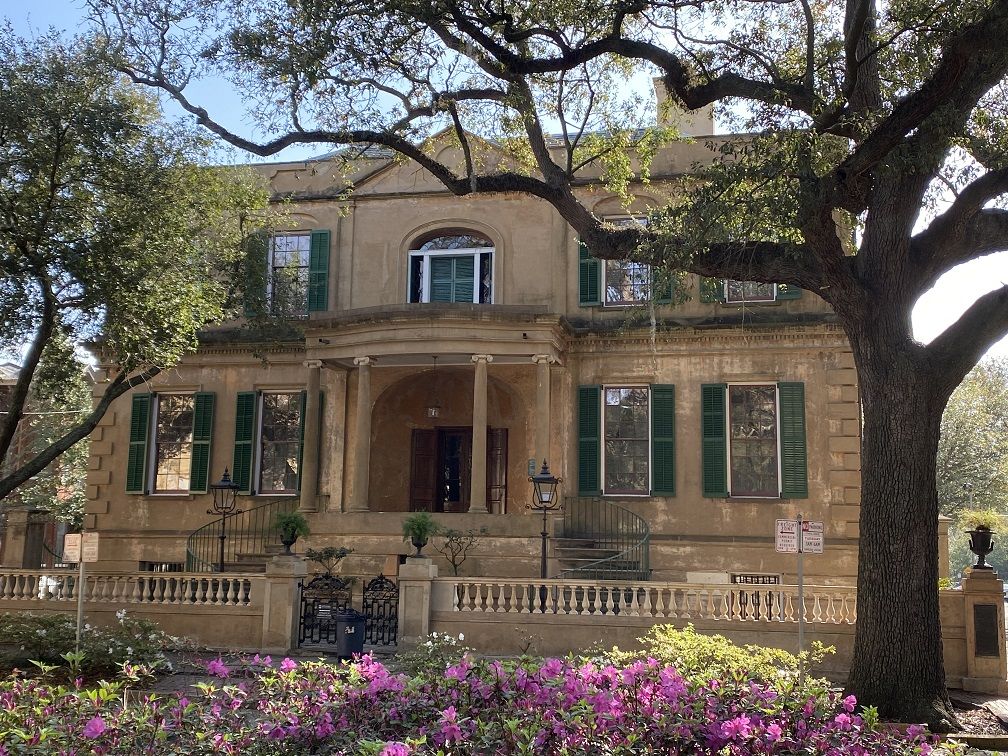 Located at 124 Abercorn Street, Savannah, the Owens-Thomas House incorporating its Slave Quarters, was built in 1819 in the neoclassical styles popular in England during the Regency period (1811-1820). The house was bequeathed to the Telfair Academy of Arts and Sciences as the South's oldest art museum, in 1951. The house is notable for its early cast iron side veranda with elaborate acanthus (one of the most common plant forms to make foliage ornament and decoration) scroll supports on which the Marquis de Lafayette addressed the citizens of Savannah on his visit in 1825. The house was designated a National Historic Landmark in 1976, as one of the nation's finest examples of English Regency architecture. Located at 124 Abercorn Street, Savannah, the Owens-Thomas House incorporating its Slave Quarters, was built in 1819 in the neoclassical styles popular in England during the Regency period (1811-1820). The house was bequeathed to the Telfair Academy of Arts and Sciences as the South's oldest art museum, in 1951. The house is notable for its early cast iron side veranda with elaborate acanthus (one of the most common plant forms to make foliage ornament and decoration) scroll supports on which the Marquis de Lafayette addressed the citizens of Savannah on his visit in 1825. The house was designated a National Historic Landmark in 1976, as one of the nation's finest examples of English Regency architecture.
Old Savannah Cotton Exchange
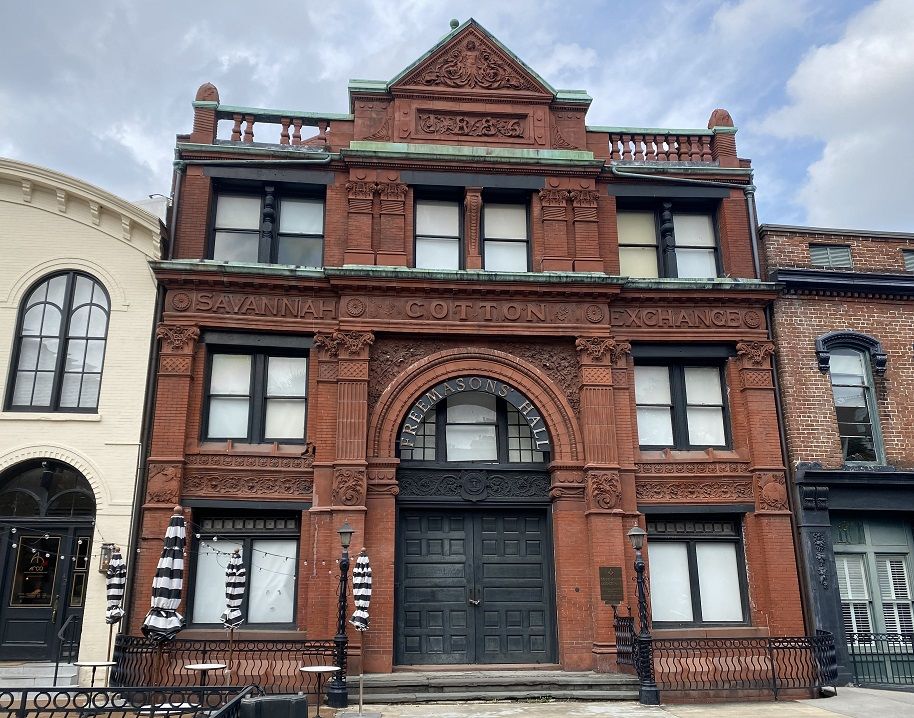 Established in 1876 the Savannah Cotton Exchange is where brokers met to set the market price of cotton which was to be shipped or exported. By the end of the 19th century planters were selling their own products at interior markets marking the decline of the exchange and in 1951 the cotton exchange went out of business. The building is built in the center of a slip leading to the river, and is raised over thirty-five feet from the ground by iron pillars, that gives it free access to River Street, which is where the former warehouses stood. In 1976 is became the home for the Masonic Lodge. Established in 1876 the Savannah Cotton Exchange is where brokers met to set the market price of cotton which was to be shipped or exported. By the end of the 19th century planters were selling their own products at interior markets marking the decline of the exchange and in 1951 the cotton exchange went out of business. The building is built in the center of a slip leading to the river, and is raised over thirty-five feet from the ground by iron pillars, that gives it free access to River Street, which is where the former warehouses stood. In 1976 is became the home for the Masonic Lodge.
River Street
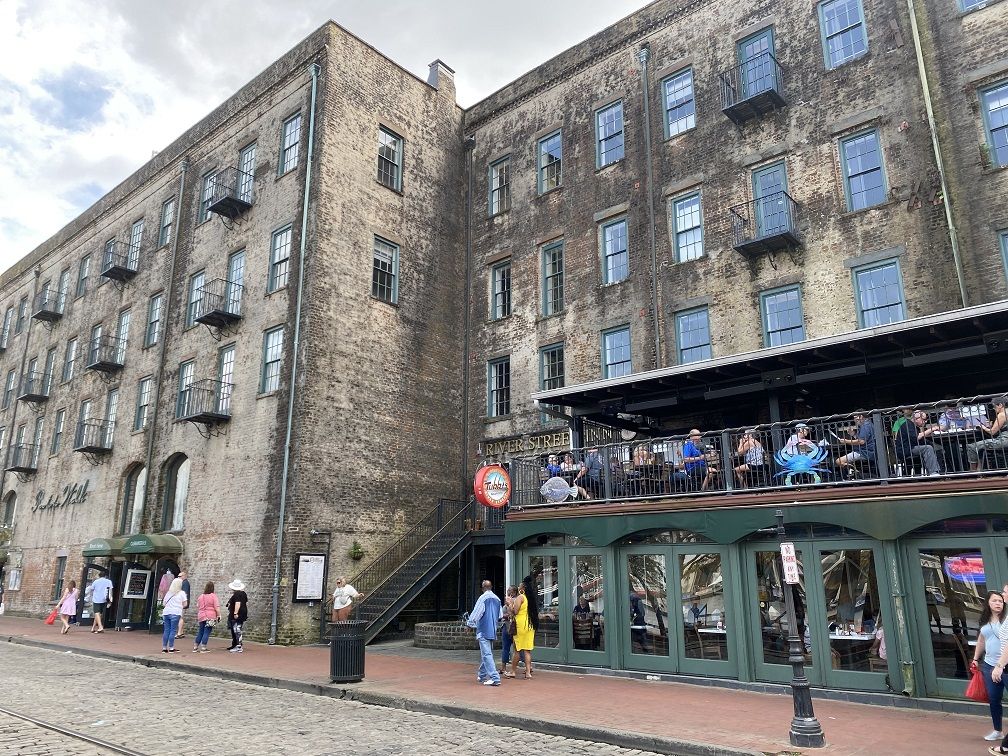 River Street today accommodates over 75 boutiques, galleries, artists' studios, restaurants and bars. Originally, it was the area that contained warehouses for the storage of cotton prior to being shipped out of Savannah, and for the receipt of slaves being brought into the country. Adjacent to the river the street is paved with cobblestones, these stones once acted as ballast for the ships destined to collect cargos from Savannah. Once the ship arrived their ballast was off loaded and used as a top course on the streets throughout the Historic District. Today, it is the place that Savannah Riverboat cruises sails from. It is also said that the area is haunted due to it once being a burial ground for the Native tribes from the surrounding area, and also due to the number of slaves who died here. River Street today accommodates over 75 boutiques, galleries, artists' studios, restaurants and bars. Originally, it was the area that contained warehouses for the storage of cotton prior to being shipped out of Savannah, and for the receipt of slaves being brought into the country. Adjacent to the river the street is paved with cobblestones, these stones once acted as ballast for the ships destined to collect cargos from Savannah. Once the ship arrived their ballast was off loaded and used as a top course on the streets throughout the Historic District. Today, it is the place that Savannah Riverboat cruises sails from. It is also said that the area is haunted due to it once being a burial ground for the Native tribes from the surrounding area, and also due to the number of slaves who died here.
Savannah City Hall
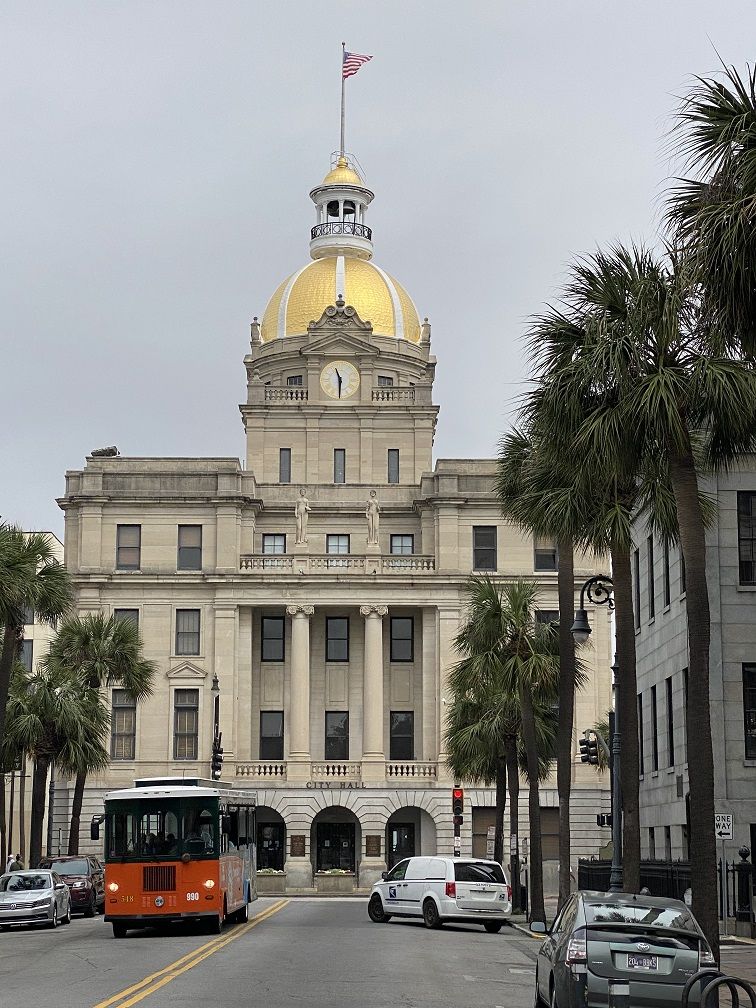
Built on the site of the former City Exchange between 1904 and 1905, the city hall is the seat of government for the city of Savannah. Opened in 1906, it is in Renaissance Revival style with it‘s exterior façade faced with limestone and granite. Capped with a copper dome, this was covered with gold leaf in 1987. The original plan was to have four statues of chariots on top of the building's four corners, but this was abandoned due to financial limitations.
|
 |
| |
 |
|


